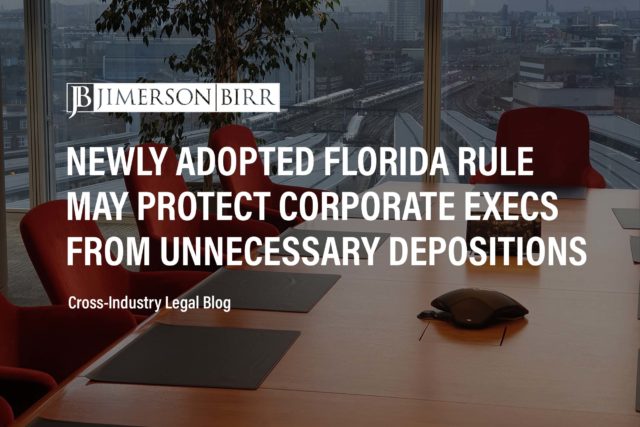How does student safety affect schools?
Student safety is a paramount concern for schools, impacting every aspect of their operations and the well-being of the entire school community. A safe learning environment is essential for fostering academic success, social-emotional development, and overall student achievement. When students feel safe and secure at school, they are better able to focus on learning, engage in classroom activities, and form positive relationships with peers and educators. When student safety is compromised, it can have significant detrimental effects on students’ academic performance, mental health, and overall sense of well-being.
Beyond its direct impact on students, student safety also affects the broader school community. Schools have a duty of care to ensure the safety and security of all individuals on campus, and incidents of violence, bullying, or other safety threats can create fear, anxiety, and stress among stakeholders. Addressing student safety concerns requires a coordinated effort involving school leadership, faculty, staff, and community partners to implement effective prevention strategies, respond to incidents promptly, and provide support services to those affected.
In addition to its immediate impact on individuals and communities, student safety can also have legal and financial implications for schools. Schools have a legal obligation to provide a safe and secure learning environment under state and federal laws, and failure to meet these obligations can result in legal liabilities, lawsuits, and financial penalties. Investing in proactive measures to enhance student safety, such as hiring security personnel, installing surveillance systems, and implementing crisis intervention protocols, can help mitigate risks and minimize potential legal and financial consequences.
Need help regarding student safety? Schedule your consultation today with a top education attorney.
In Florida, which laws regarding student safety apply to schools?
In Florida, several laws and regulations regarding student safety apply to schools, aiming to ensure the protection and well-being of students in educational settings. Some of the key laws and regulations regarding student safety in Florida include:
- Alyssa’s Law, Florida Statutes, Section 1006.07: This section requires public schools in Florida to implement silent panic alert systems to facilitate rapid emergency response in the event of a security threat or other emergency situation. The law is named after Alyssa Alhadeff, one of the victims of the 2018 Marjory Stoneman Douglas High School shooting in Parkland, Florida.
- School Safety and Security Best Practices Act: This statute requires the Florida Department of Education (FLDOE) to develop and distribute best practices for school safety and security to all public schools in the state. These best practices cover a range of topics, including campus security, emergency preparedness, threat assessment, and crisis response.
- Anti-Bullying Policies (Florida Statutes, Section 1006.147): Florida law requires school districts to adopt and implement policies prohibiting bullying and harassment in schools. These policies must include procedures for reporting and investigating incidents of bullying, as well as consequences for offenders.
- Youth Mental Health Awareness and Assistance Training (Florida Statutes, Section 1012.584): This statute requires school personnel to undergo training on youth mental health awareness and assistance to help identify and support students who may be experiencing mental health issues or crisis situations.
What are common issues regarding student safety that lead to litigation?
Several common issues regarding student safety can lead to litigation, as disputes arise over the implementation, enforcement, and fairness of safety measures in schools. Some of the key issues include:
- Negligent Supervision: Schools have a duty of care to provide adequate supervision and oversight to ensure the safety and well-being of students. Failure to supervise students properly, such as during recess, field trips, or extracurricular activities, can result in accidents, injuries, or incidents of misconduct. Litigation may occur if it is alleged that the school failed to fulfill its duty of supervision, resulting in harm to a student.
- Bullying and Harassment: Bullying and harassment are pervasive issues in schools that can have severe consequences for students’ physical and emotional well-being. Schools have a legal obligation to address and prevent bullying and harassment, but allegations of inadequate response or failure to protect students from bullying can lead to litigation. This may include claims of negligence, deliberate indifference, or violations of anti-bullying policies and laws.
- Inadequate Security Measures: Schools are responsible for implementing reasonable security measures to protect students from foreseeable risks of harm, including violence, intruders, or other safety threats. Litigation may arise if it is alleged that the school failed to implement adequate security measures or responded inadequately to security threats, resulting in harm to students. This could include claims of negligence, premises liability, or failure to provide a safe environment.
- Unsafe Facilities or Conditions: Schools must maintain safe and hazard-free facilities to ensure the well-being of students and staff. Issues such as defective equipment, unsafe premises, or hazardous conditions can pose risks to student safety and may lead to accidents, injuries, or health problems. Litigation may occur if it is alleged that the school failed to address known safety hazards or maintain a safe learning environment.
- Failure to Address Mental Health Needs: Schools have a responsibility to address the mental health needs of students and provide appropriate support services and interventions. Failure to identify and address mental health issues, such as depression, anxiety, or suicidal ideation, can have serious consequences for student safety. Litigation may occur if it is alleged that the school failed to provide adequate mental health support or respond appropriately to warning signs of mental distress.
To determine whether your unique situation may necessitate litigation, please contact our office to set up your initial consultation.
What steps should schools take to minimize the risk of litigation over student safety?
To minimize the risk of litigation over student safety, schools should implement proactive measures to create a safe and supportive learning environment and mitigate potential risks. Here are some key steps schools can take:
- Develop Comprehensive Safety Policies: Schools should develop comprehensive safety policies and procedures that address a wide range of safety concerns, including bullying, harassment, physical safety, emergency preparedness, and crisis response. These policies should be clear, accessible, and regularly reviewed and updated to ensure they reflect current best practices and legal requirements.
- Provide Ongoing Training and Education: Schools should provide ongoing training and education to faculty, staff, and students on safety protocols, procedures, and expectations. Training topics may include emergency response drills, threat assessment procedures, bullying prevention strategies, and recognizing signs of mental distress. By ensuring that all members of the school community are prepared to respond effectively to safety threats, schools can minimize risks and enhance overall safety.
- Implement Effective Supervision Practices: Schools should implement effective supervision practices to ensure that students are adequately supervised at all times, both inside and outside the classroom. This may include establishing clear supervision protocols for recess, lunchtime, hallways, and extracurricular activities, as well as providing training to staff on effective supervision techniques and strategies.
- Address Bullying and Harassment: Schools should take proactive measures to prevent and address bullying and harassment, including implementing anti-bullying policies, providing training to staff and students on bullying prevention, and fostering a culture of respect and inclusion. Schools should promptly investigate reports of bullying or harassment, take appropriate disciplinary action when necessary, and provide support services to affected students.
- Enhance Security Measures: Schools should enhance security measures to protect students from potential safety threats, such as violence, intruders, or emergencies. This may include implementing access control measures, installing security cameras, conducting security assessments, and developing emergency response plans. Schools should also collaborate with local law enforcement agencies to coordinate emergency preparedness and response efforts.
- Maintain Safe Facilities: Schools should regularly inspect and maintain school facilities to ensure they are safe and hazard-free. This includes addressing any maintenance issues, repairing or replacing equipment as needed, and implementing safety measures to prevent accidents or injuries. Schools should also provide adequate lighting, signage, and security features to enhance safety on campus.
- Promote Mental Health and Well-being: Schools should promote mental health and well-being among students by providing access to support services, counseling resources, and mental health education. This may include implementing programs to address social-emotional learning, resilience-building, and stress management, as well as providing training to staff on recognizing and responding to mental health concerns.
- Establish Collaboration and Communication: Schools should establish collaboration and communication channels with parents, caregivers, community organizations, and local law enforcement agencies to address safety concerns effectively. Building strong partnerships with stakeholders can help schools identify potential risks, implement preventive measures, and respond promptly to safety threats.
Frequently Asked Questions
What should I do if my child feels unsafe at school?
Parents and caregivers may seek guidance on what steps to take if their child expresses concerns about safety at school. Schools should provide information on how to report safety concerns, such as speaking with a teacher, counselor, or administrator, and may offer resources or support services to address the child’s concerns.
How does the school handle bullying and harassment?
Parents and students may have questions about the school’s policies and procedures for addressing bullying and harassment. They may inquire about how the school responds to reports of bullying, the disciplinary actions taken against offenders, and the support services available to students who have experienced bullying or harassment.
How does the school ensure the safety of students during emergencies or crisis situations?
Parents and caregivers may inquire about the school’s emergency preparedness and response plans, including protocols for lockdowns, evacuations, and other emergency scenarios. They may seek information on how the school communicates with families during emergencies and what procedures are in place to reunite students with parents or caregivers.
Have more questions about student safety?
Crucially, this overview of student safety does not begin to cover all the laws implicated by this issue or the factors that may compel the application of such laws. Every case is unique, and the laws can produce different outcomes depending on the individual circumstances.
Jimerson Birr attorneys guide our clients to help make informed decisions while ensuring their rights are respected and protected. Our lawyers are highly trained and experienced in the nuances of the law, so they can accurately interpret statutes and case law and holistically prepare individuals or companies for their legal endeavors. Through this intense personal investment and advocacy, our lawyers will help resolve the issue’s complicated legal problems efficiently and effectively.
Having a Jimerson Birr attorney on your side means securing a team of seasoned, multi-dimensional, cross-functional legal professionals. Whether it is a transaction, an operational issue, a regulatory challenge, or a contested legal predicament that may require court intervention, we remain tireless advocates at every step. Being a value-added law firm means putting the client at the forefront of everything we do. We use our experience to help our clients navigate even the most complex problems and come out the other side triumphant.
If you want to understand your case, the merits of your claim or defense, potential monetary awards, or the amount of exposure you face, you should speak with a qualified Jimerson Birr lawyer. Our experienced team of attorneys is here to help. Call Jimerson Birr at (904) 389-0050 or use the contact form to schedule a consultation.

We live by our 7 Superior Service Commitments
- Conferring Client-Defined Value
- Efficient and Cost-Effective
- Accessibility
- Delivering an Experience While Delivering Results
- Meaningful and Enduring Partnership
- Exceptional Communication Based Upon Listening
- Accountability to Goals











